This recipe for roasted pork tenderloin with raspberry sauce makes an ideal Sunday dinner, but is not so lengthy or complicated that it couldn't work for weekdays, too! Lean pork tenderloin slices are smothered in a seriously good, sweet and tart raspberry balsamic sauce, with one easy trick guaranteeing you a perfect thickened texture and extra-bold flavor.

Raspberry jam has been having a moment in my kitchen, from classic cream cheese thumbprint cookies to the best rainbow cookie filling to this ultra-savory roasted pork tenderloin with raspberry sauce.
It creates a boldly fruit-forward and sweet base, which combined with balsamic vinegar, rosemary, cayenne pepper, and more forms a well-rounded, flavorful pork tenderloin sauce.
While I love making slow cooker pork tenderloin (this with a balsamic mushroom sauce), oven-roasted pork tenderloin is a much quicker method of preparation that even makes this tasty pork dinner possible in under one hour.
#1 Tip for Pork Tenderloin Sauce
What takes this meal from good to GREAT is the thick and flavorful sauce, no roux or cornstarch needed. Once the sauce ingredients are whisked together, a portion is brushed on the pork for roasting while another portion goes into a saucepan to reduce and thicken as the pork cooks. When the pork is finished, pour most of the drippings into the stovetop saucepan and combine for a truly amazing flavor.
Recipe Ingredients
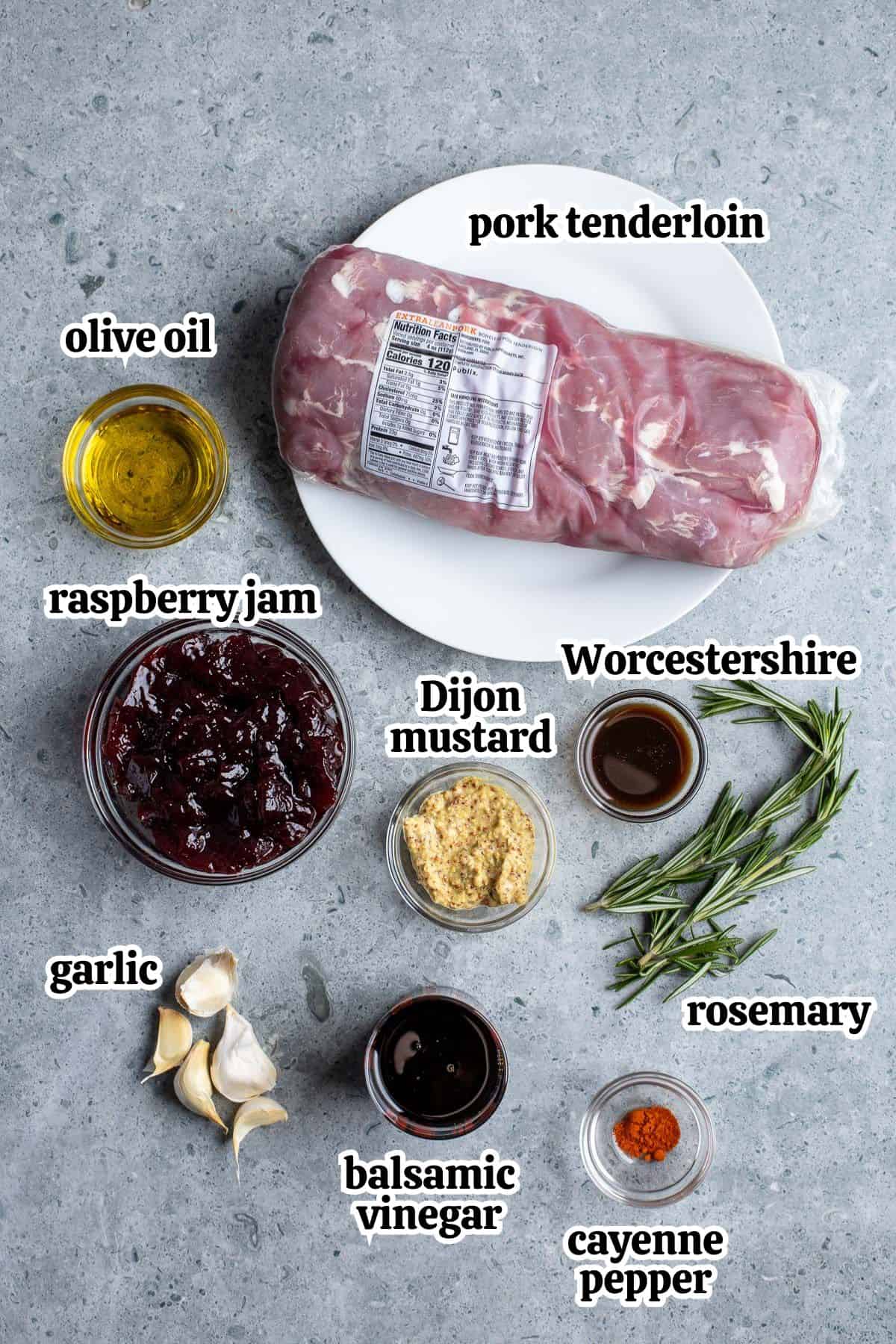
- Pork tenderloin: This recipe for pork tenderloin with raspberry sauce calls for 2 ¼ to 2 ½ pounds - there's some wiggle room. A package of this size will separate into two tenderloins once opened, with both cooked here.
- Oil: For searing the pork tenderloin. I use olive oil but other options work: avocado, grape seed, etc.
- Raspberry jam: Don't worry about the sauce being overly sweet, as the other ingredients act as tart, savory, umami foils. Look for a seedless variety, and I recommended sticking with standard jam or preserves. "Spreadable fruit" kinds often contain less sugar and can throw this sauce out of balance.
- Balsamic vinegar: The acidity and flavor of balsamic vinegar contrasts with the sweet raspberry jam beautifully. I don't recommend substituting in another type of vinegar.
- Worcestershire sauce: For a deliciously umami note.
- Dijon mustard: Frequently added to sauces and dressings for that "X" factor, its sharp flavor blends into the sauce ingredients well.
- Rosemary: Sprigs of fresh rosemary are fragrantly pungent in pan sauces, but I'll often use their dried counterparts for convenience. The measurements for both are featured in the recipe card below.
- Garlic: Fresh cloves, minced, are recommended versus the jarred stuff.
- Cayenne pepper: Just a little bit (one-quarter teaspoon) more for flavor than heat. Increase this if you'd like a zippier sauce.
Step-by-Step Instructions
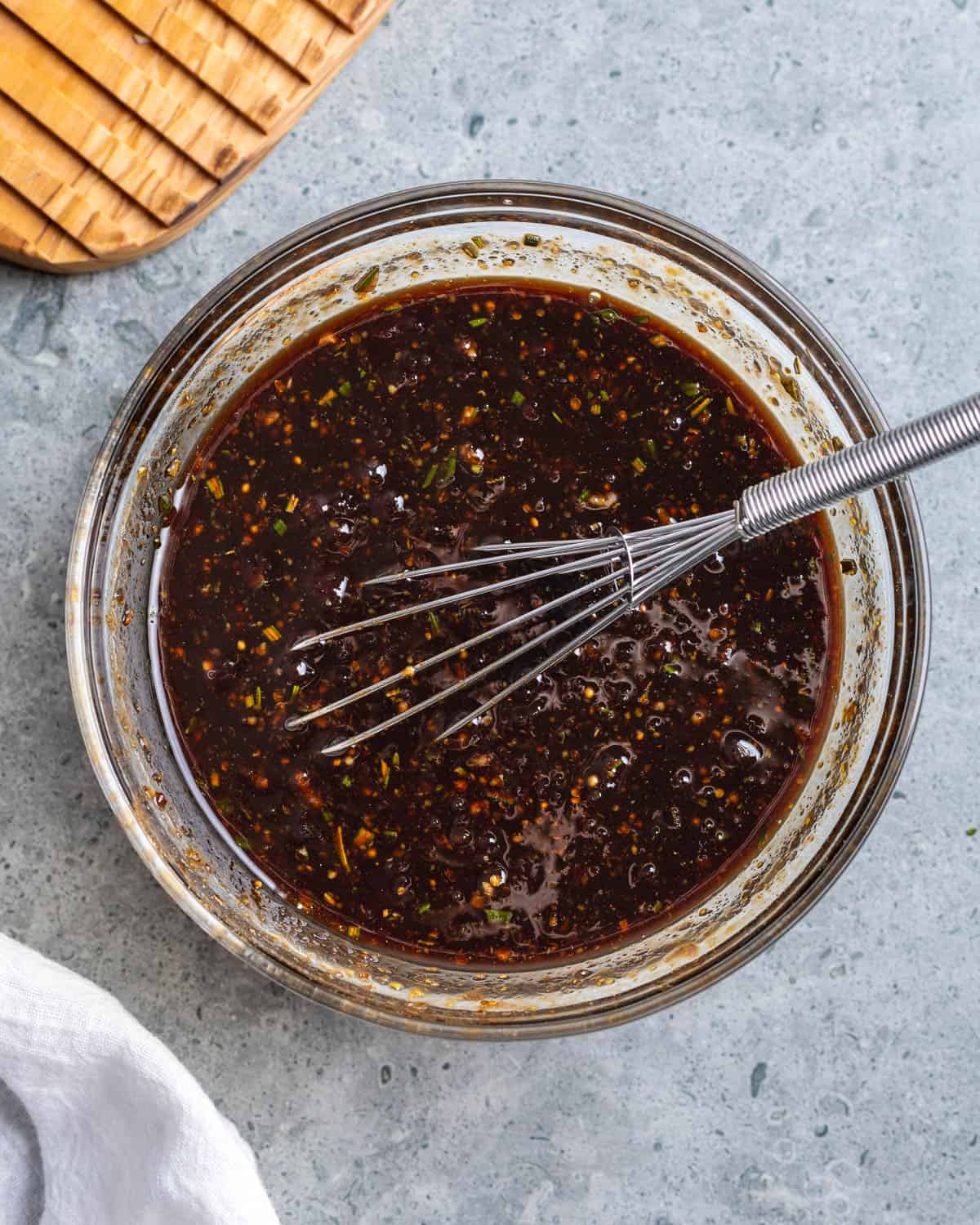
- Step 1: Whisk together all sauce ingredients in a bowl. Transfer three-quarters cup to a small saucepan.
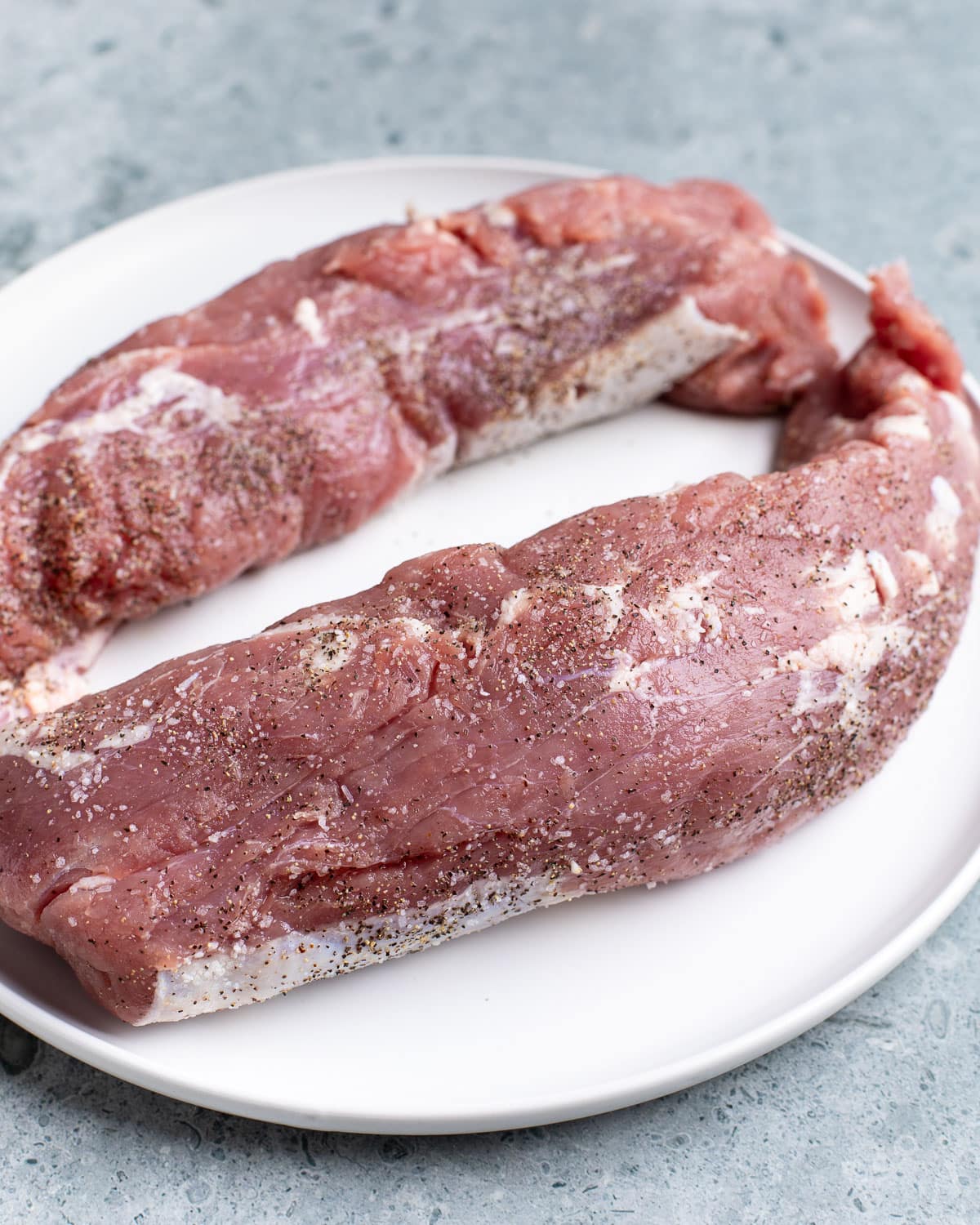
- Step 2: Pat the tenderloins dry and season all sides with salt and pepper.
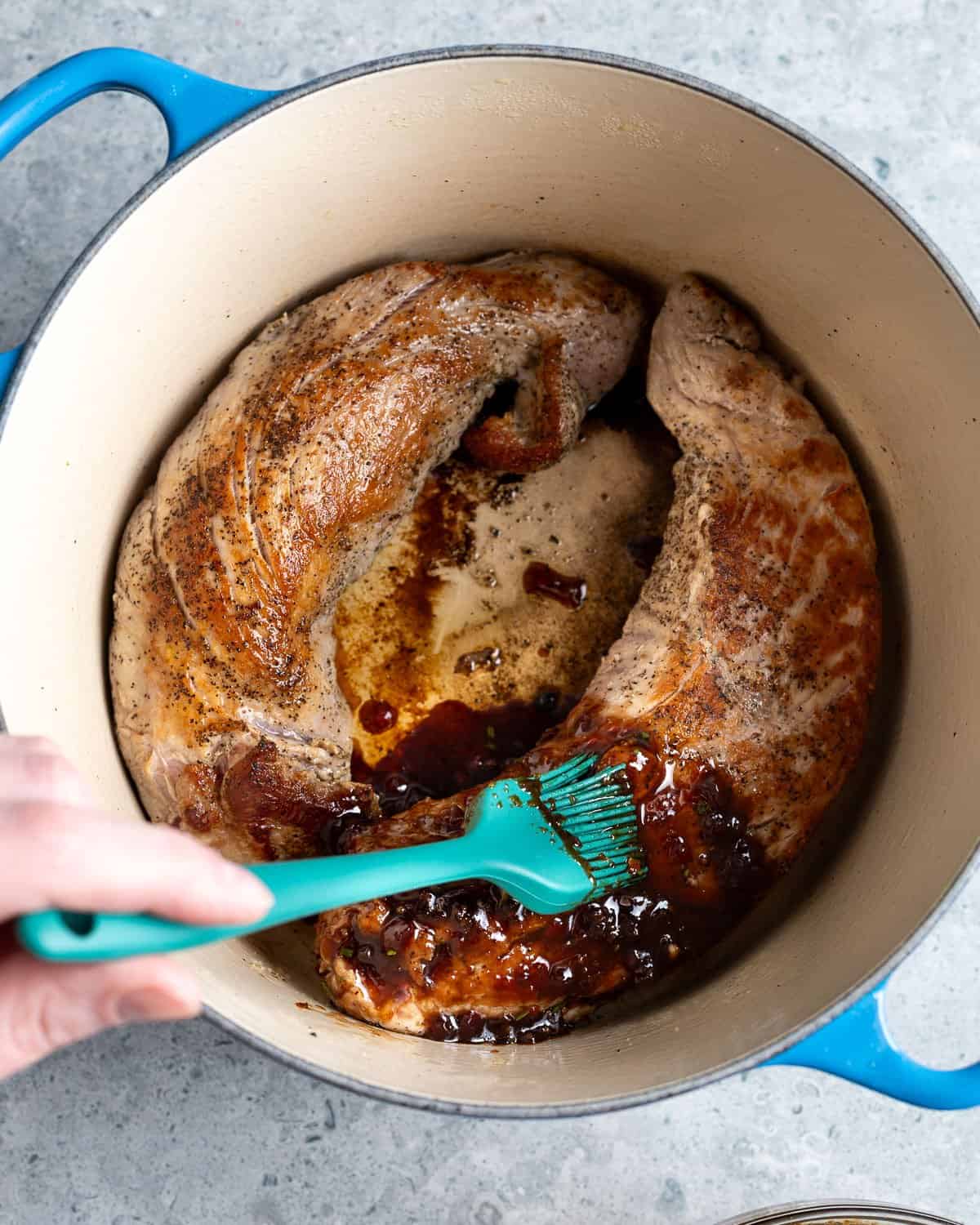
- Step 3: Sear in a Dutch oven or large pan for 2-3 minutes per side, or until a nice golden-brown crust develops. Brush the meat with the remaining sauce (not in the saucepan).
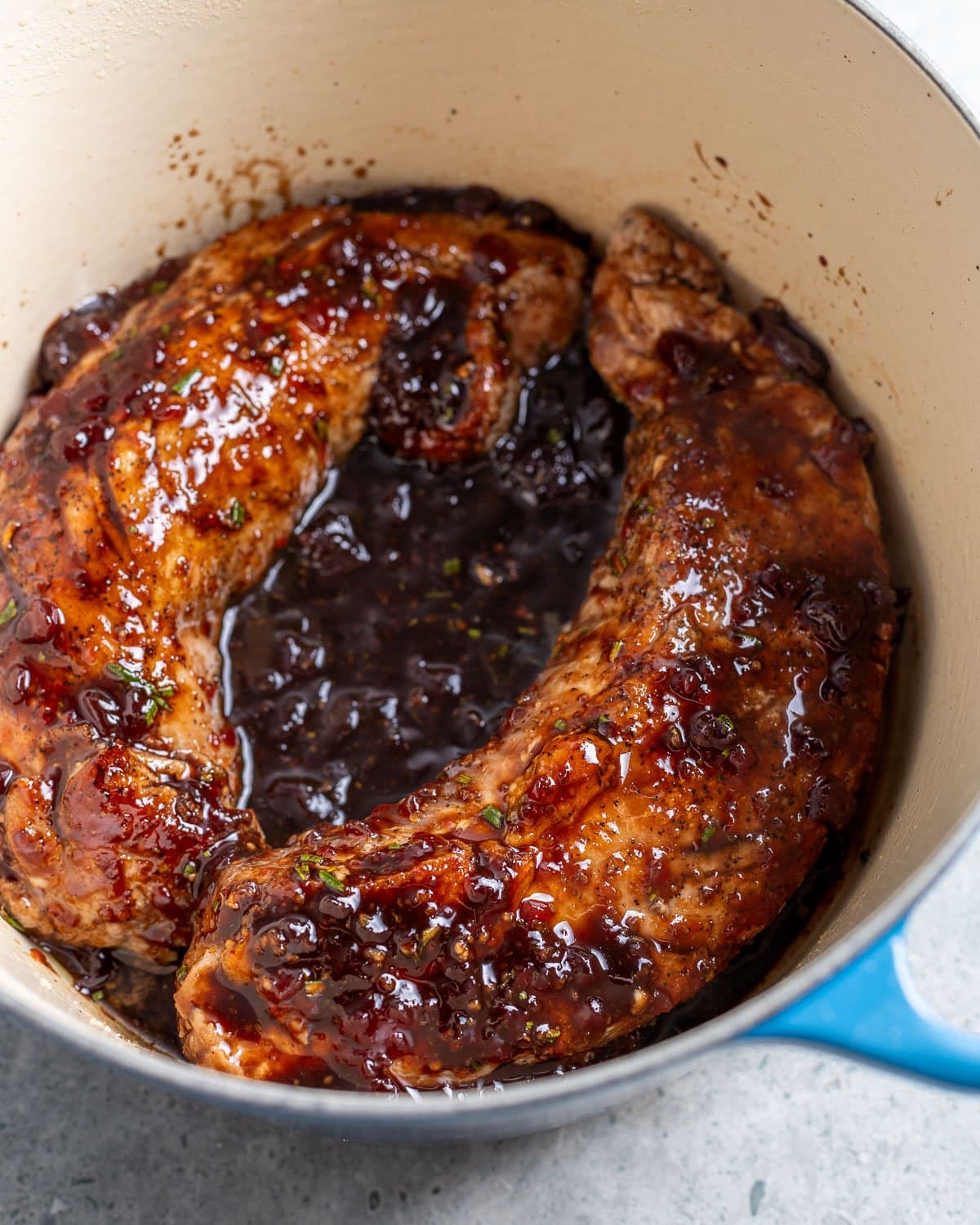
- Step 4: Set the reserved sauce to a low simmer on the stove while the tenderloins roast on the middle rack of the oven at 400°F for 25-30 minutes, or until 145°F for medium doneness.

- Step 5: Stir about half of the pan drippings into the saucepan of reserved sauce and let the pork tenderloins rest for 10 minutes before slicing and serving with the thickened sauce.
Recipe Tips and Tricks
- Pork tenderloin vs. pork loin: They may be tricky to differentiate at the store so read the labels closely. The vacuum-sealed packaging makes it difficult to tell there are two separate, thinner tenderloin pieces in those packages, while a pork loin is one large cut which can be bone-in. The timing for this recipe is for pork tenderloin.
- Checking for doneness: Using an instant-read or reliable leave-in thermometer is the best option to know when your roasted pork tenderloin is done right to your liking. Per the FDA, pork roasts have a safe minimum internal temperature of 145°F with a 3-minute rest time. This corresponds with around a medium doneness.
- Roasting pan options: If you don't have a Dutch oven or dish that can otherwise go from stovetop to oven use, sear the pork tenderloin in a large pan (ideally with tall sides to cut down on splatter) and transfer to a roasting pan or large baking dish for roasting.
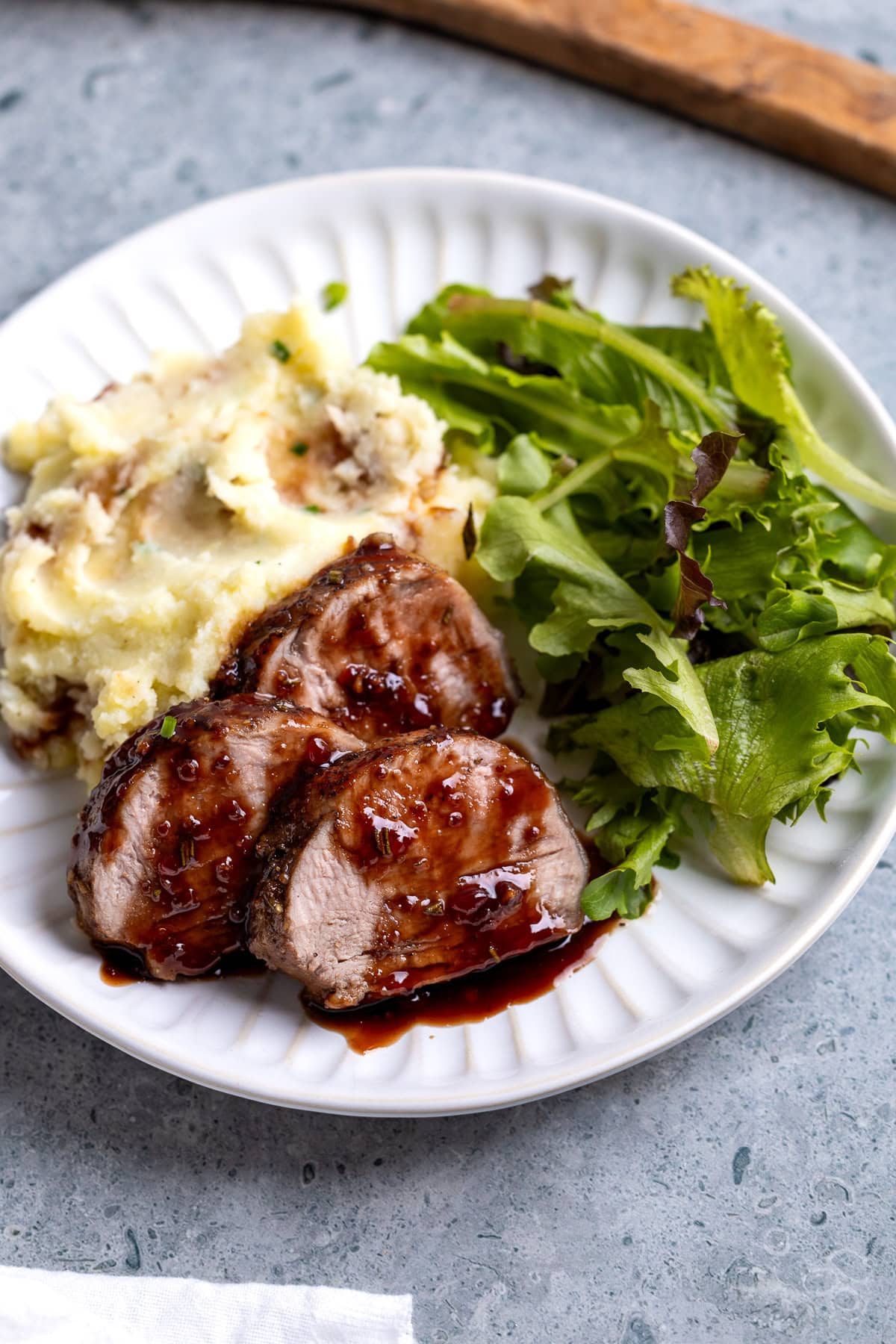
Serving Suggestions
Potatoes of any kind are always a hit when served alongside pork tenderloin along with a nice leafy green salad (may I suggest my house-favorite maple balsamic vinaigrette?). Lots of vegetables would pair nicely as well, though I steered clear of listing any of the oven-roasted variety as the oven will be occupied with the pork.
If you’ve enjoyed this recipe, I’d love for you to leave a star rating in the recipe card and/or a comment review below!
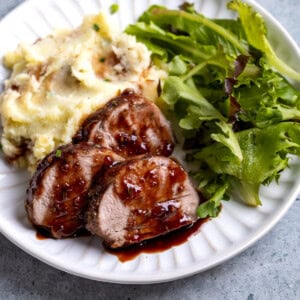
Roasted Pork Tenderloin with Raspberry Sauce
Ingredients
Raspberry Sauce
- ¾ cup seedless red raspberry jam
- ¼ cup balsamic vinegar
- 6 cloves garlic minced
- 1 ½ Tablespoons Dijon mustard
- 2 teaspoons Worcestershire sauce
- ¾ teaspoon dried rosemary sprigs (or 2 Tablespoons fresh rosemary)
- ¼ teaspoon ground cayenne pepper
- Kosher salt
- Ground black pepper
Searing the Pork
- 2.25 - 2.5 pound pork tenderloin (2 separate pieces)
- Kosher salt
- Ground black pepper
- 2 Tablespoons olive oil or avocado or grape seed oil
Instructions
- Arrange an oven rack to where your Dutch oven or baking dish will be situated in the center. Preheat oven to 400°F.
- Whisk together all raspberry sauce ingredients. Transfer out about ¾ cup of the sauce to reserve it in a small saucepan and set aside for now.
- Pat the meat dry with paper towels and remove any silver skin on the surface. Season all sides of the meat with kosher salt and pepper.
- Add oil to a large-enough Dutch oven or pot over medium-high heat. Once well-heated, sear pork tenderloins for 2-3 minutes per side, until all sides develop a golden-brown crust. Remove the Dutch oven from the heat when done.
- At this time set the saucepan of reserved sauce on the stovetop over low-medium heat. This will cook down some and thicken while the pork roasts.
- Pour the raspberry sauce that's still in the mixing bowl over top of the seared pork to coat it, then place the Dutch oven in the preheated oven. Roast, basting the meat with the runoff juices halfway through, for 25-30 minutes, or until the pork registers 145°F in the center for medium doneness.
- Once the pork is done, remove from the oven and stir about half of the drippings into the saucepan of thickened reserved sauce. Continue to cook while the pork rests for 5-10 minutes before slicing.
- Slice the pork tenderloin into thin pieces and serve with raspberry sauce.
Notes
- Pork tenderloin: Pork tenderloin of this weight will come in two pieces that are vacuum-packed together. This is not the same thing as pork loin, which is one large piece that may be bone-in. The two are not interchangeable in this recipe, so make sure to use tenderloin.
- Jam vs. spreadable fruit: The bold sauce ingredients contrast nicely with the sweetness of the jam. Lower-sugar "spreadable fruit" varieties aren't recommended as they can throw the sauce out of balance.
- Testing for doneness: All ovens have their quirks and it can be easy to overcook pork. Using a reliable leave-in or instant read meat thermometer is the best way to know when your roasted pork tenderloin is done as you like it.
Nutrition
Nutritional information is provided as an estimate. As it can vary due to many factors (brands used, quantities, etc.), we cannot guarantee its accuracy.
Food Safety and Nutrition DisclaimerWould you like to save this?
Plus receive periodic recipe newsletter emails.

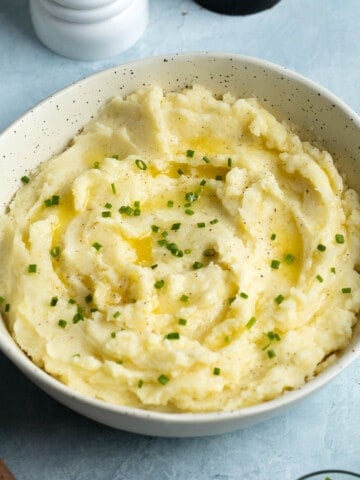
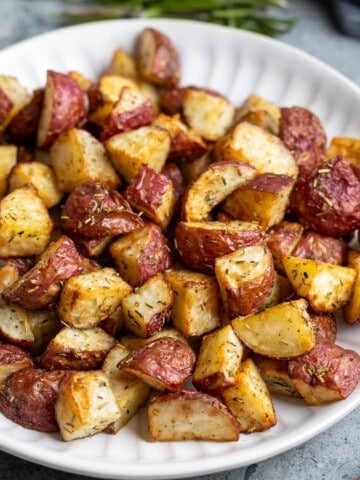

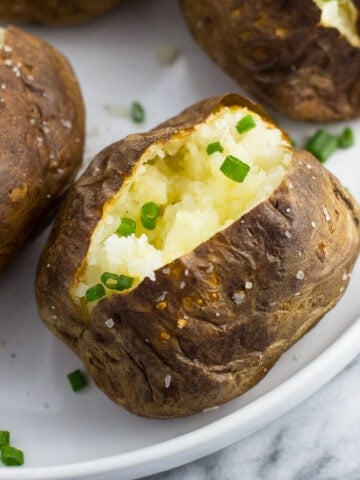
Jeanette says
This was delicious and I will be making it again! Would highly recommend it!
Alyssa says
Thank you for leaving a review, Jeanette! I'm happy to hear it was a hit.
Alicia says
Easy & DEICIOUS!!!!
Alyssa says
So glad you enjoyed it! Thanks for leaving a review.